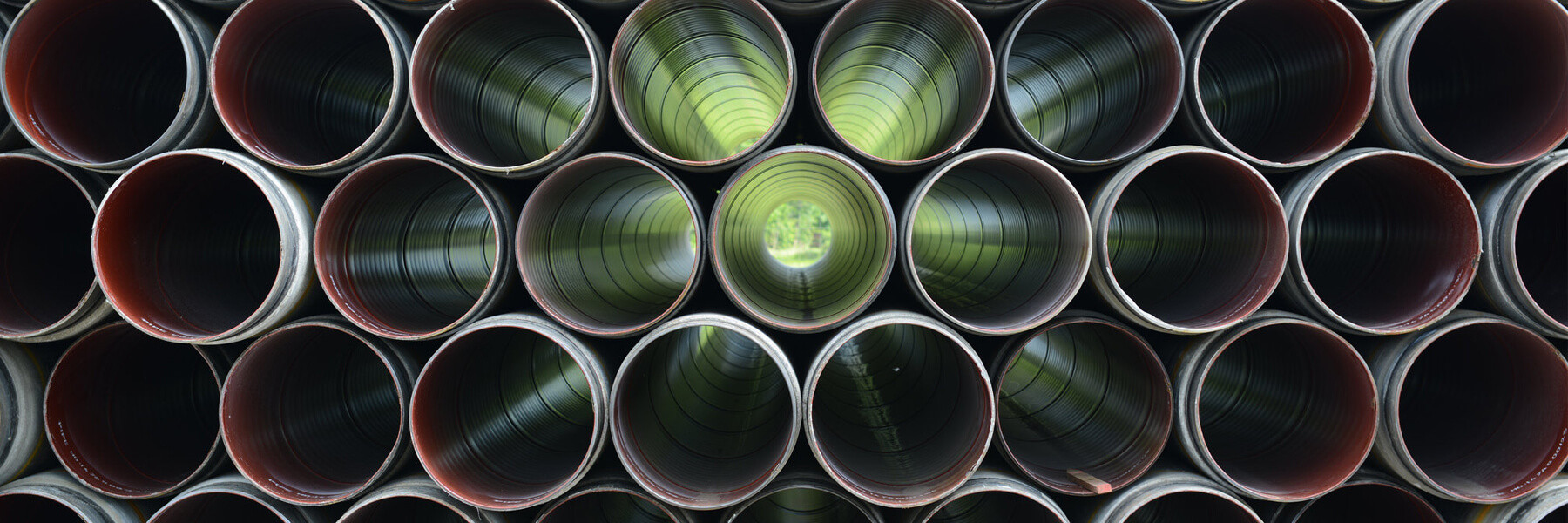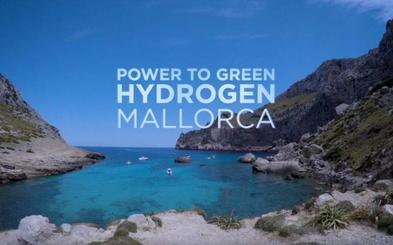INNOVATIVE PROJECTS PLATFORM
To efficiently build on its Members' actions to promote or contribute to innovative technologies, regulation and business models, and partnerships across the value chain, ENTSOG has created the Innovative Projects Platform to map TSOs’ projects and partnerships on Research, Development and Innovation (RDI) activities for the energy transition.
This public platform provides information and links to enable exchange of best practices applied at national level and in some cases, across borders through partnership efforts.
These innovative solutions focus on topics such as repurposing infrastructure for renewable gases and projects for hydrogen, CCS and CO2 transport, biogas, energy system integration. These innovative applications support the achievement of the current EU goals of reducing GHG emissions and reaching the decarbonisation goal of net-zero by 2050.
*Disclaimer: The content published on this page is information owned by TSOs and not by ENTSOG. It is therefore published on behalf of TSOs. Please note terms and conditions of use of the website (including article 7) are fully applicable to this page.
Technology
Discover here how technologies can optimise the usage of the grid, make digital layer connections and support decarbonisation of the EU gas system. Technology R&D has a vital role in the energy transition. ENTSOG Members (TSOs) are developing new and innovative technologies to offer sustainable solutions for the gas sector.
Regulation & Business Model
Stay informed on how ENTSOG Members (TSOs) engage in development of the new energy products and services to foster uptake of renewable and decarbonised gases into the grid.
Partnership
Look at new partnerships and initiatives formed by ENTSOG’s Members (TSOs). They are actively working together as well as with various stakeholders on projects aimed at decarbonisation of the gas sector and of the whole EU economy.
Hydrogen
Hydrogen is a gas under standard conditions and there are also different hydrogen derivatives, such as ammonia and synthetic electrofuel. sHydrogen can be produced from diverse process technologies, such as electrolysis and steam-methane reforming (with or without carbon capture and permanent storage of this carbon to reduce emissions).
Repurposing for Renewable Gases
Repurposing of pipelines for renewable gases transport (e.g. hydrogen) is a cost effective way to meet decarbonisation goals and can be undertaken without compromising the ability of the natural gas network to ensure security of supply.
Biogas
Biogas is obtained via the anaerobic decomposition of the organic matter. After the process of upgrading, biogas becomes biomethane with the same quality standard as natural gas and can be transported via the existing grid infrastructure.
CCS and CO2 Transport
Carbon Capture and storage is the process of capturing CO2 from a set of possible sources, such as for example fossil fuel power plants, transporting it to a storage site, and depositing it underground on a permanent basis. The aim is to prevent the release of CO2 into the atmosphere.
Energy System Integration
Integrated infrastructure planning for electricity and gases is essential to support the decarbonisation of the energy system sector, particularly for facilitating the transport of renewable gases like hydrogen.
CNG
Compressed Natural Gas (CNG) is a fuel source that is made from compressing natural gas to less than 1% of its standard atmospheric volume. CNG combustion produces fewer climate-impacting gases than other fossil fuels.
Digitalisation
Digitalisation can bring various benefits to day-to-day operations such as enhanced control over the gas quality and cost reductions. TSOs look at data-driven solutions to boost performance, efficiency and competitiveness.
Heating & Cooling
Cutting the energy consumption in heating and cooling in buildings and industry can be achieved through various technologies. TSOs are working on developing cost-efficient solutions for the decarbonisation of this sector.
Certification of green gases
To ensure the cross-border scale up and tradability of renewable, decarbonised and low-carbon gases. This can be achieved via pan European Guarantees of Origin and Certification Schemes.
Gasunie
HyTransPort.RTM
The realisation of the hydrogen pipeline within the HyTransPort.RTM project is a key step forward in establishing Rotterdam as a major European hydrogen hub. The pipeline will be constructed between the areas of Maasvlakte and Pernis andwill be an open access pipeline, which means that any company that wishes to consume or supply hydrogen in the area can connect to the pipeline. In the future, the pipeline will also be linked to the national hydrogen grid and other European regions. In partnership with Port of Rotterdam.
Contact Robert Zwakenberg of Gasunie: robert.zwakenberg@gasunie.nl.
ENAGAS, S.A., Gas Networks Ireland, GAZ-SYSTEM, GRT-GAZ.
HYREADY
The HYREADY project provides gas systems operators – TSOs and DSOs – with engineering guidelines so their networks are ready to accept hydrogen-natural gas mixtures. The guidelines help systems operators calculate the acceptable percentage of hydrogen that can be added to a gas network. The HYREADY Guidelines are to be converted into DNV GL Recommended Practices. In partnership with ENBRIDGE (CA), GasNatural Fenosa (ES), GRDF (FR), SoCalGas (USA) and TIGF (FR). DNV GL and DBI-GUT (DE) are leading this JIP.
GASCADE, Fluxys
doing hydrogen
doing hydrogen is the large-scale pipeline project to kick-start the hydrogen market in eastern Germany, planned to be operational by 2027. The GASCADE-Fluxys project involves a strategic 50-kilometre new-built hydrogen pipeline from the area of Rostock on the Baltic Sea going southwards as part of the eastern German hydrogen grid. This infrastructure will create a powerful hydrogen hub connecting hydrogen production, storage and demand centers.
Enagas
GREEN HYSLAND
A project promoted by the Regional and National Government and some private companies: Cemex, Enagás, Acciona and Redexis. The 10 MW green hydrogen production plant will be powered by a 16 MW solar plant. The project contemplates the use of green hydrogen in mobility, as well as its injection into the gas grid.
Contact: mjaen@enagas.es
GASCADE, Gasunie
AquaVentus
The project portfolio associated with the AquaVentus initiative includes various sub-projects along the value chain from the production of hydrogen in the North Sea to transportation to customers on the mainland. These coordinated projects synchronise demand and production, thereby facilitating market roll-out. In partnership with RWE, Shell, Island of Heligoland, Reuther, Vattenfall, Siemens, Parkwind and MHI Vestas.
GASCADE, Gasunie, Fluxys
AquaDuctus
AquaDuctus is part of the project initiative AquaVentus and aims at transporting green hydrogen, which will be produced offshore in the German North Sea, to the island of Heligoland. At a later stage a connection to the German mainland and to the German national hydrogen network is foreseen. In partnership with RWE and Shell.
Gasunie
NortH2
The consortium has conducted a feasibility study that produced the first results in late 2020. Seeing as these results are positive, the consortium aims to be able to start producing the first hydrogen around 2027.In partnership with Groningen seaport, Shell, Equinor, RWE, Groningen provincial authority, Enico.
OGE
GET H2 TransHyDE
The central fundamentals for the reliable operation of a climate-neutral hydrogen infrastructure are now being further deepened with a view to the future - RWE, Nowega, Rosen, Evonik, the University of Potsdam, the DVGW, Adlares, Meter-Q Solutions and OGE are working on practical solutions for the transport of hydrogen.
OGE
SyWestH2
In the H2-suitability of steels project , materials that are currently used in Germany for the transport of natural gas are to be examined for their suitability for hydrogen. Random fracture mechanical tests should be carried out to check the steels used. The determined characteristic values are compared with the results on which the American regulations ASME 31.12 are based. The transferability of the ASME standard to the steels used in Germany is then validated. In partnership with Materials Testing Office (MPA) Stuttgar, DVGW
OGE
Westküste 100
This project is about creating a regional hydrogen network on the basis of a 30 MW electrolysis plant connected to the grid of a municipal utility. The end-to-end hydrogen value chain will include industrial customers, a hydrogen filling station and end users supplied by the municipal utility.








